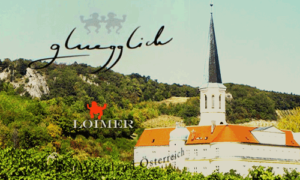Abruzzo’s Montepulciano grapes achieve better results in Villamagna DOC
Montepulciano
It was a clear but cold day in January in Amsterdam. In a cosy wine cellar, Frank Smulders MW presented a masterclass about the wines of Villamagna. Villamagna DOC is a real people story. With a lot of passion and effort the local producers established the best potential sites for high-quality Montepulciano grapes and the necessary appellation protocols. The DOC consists of a modest 85 hectares, making it one of the smallest appellations in Italy and the world.

Villamagna demands an introduction. Villamagna is a quaint medieval village in the province of Chieti in the Italian Abruzzo region. Villamagna DOC is the demarcated wine area where the Montepulciano grape reigns, not to be confused with Vino Nobile di Montepulciano predominantly made from Sangiovese, there known as Prugnolo gentile. The territory of Villamagna, including the municipalities of Villamagna, Vacri and Bucchianico, is at the centre of the Montepulciano d’Abruzzo wine production area.

A bit of history
You won’t be surprised that the Villamagna wine story did not begin in 2011 when the Villamagna DOC was established. Already in 1059, the name Villamagna appeared in the papal bull by Niccolò II. And, in 1323, Villamagna could be found in the “Register of Parchments” of the Archiepiscopal Curia of Chieti as a land of vineyards. Villa-magna comes from two Latin words: ”Villa” meaning mansion, and “Magnus”, meaning great. According to one of the producers present at the tasting, the town’s name Villamagna or “big farm” (in Latin) expresses its viticultural vocation well. Its unique location, 10 km from the Adriatic Sea (generating sea breezes) but also near the foothills of the Majella mountain range (with a distinct diurnal temperature range during the growing season), makes Villamagna a favourable place for viticulture.
The road to Villamagna DOC
At the end of the 1990s, the road to a Villamagna Doc was not a frivolous decision of some local wine families and enthusiasts. It required a decade of studies focusing on the composition of the soil, the harvests of the previous decades, the exposure of the vineyards and the clones of Montepulciano Villamagna to get the seal of approval. From 2011 on, Villamagna can call itself a Controlled Designation of Origin or DOC.
The standards for Villamagna DOC wines are higher than for Montepulciano d’Abruzzo DOC wines.
The distinctive feature of the Villamagna wine region is the combination of sandy-clayey soils (that give the wine complexity, softness and longevity) and calcareous-marly soils (that enhance the deep colour, intense and varied aromas). Not just soil, but also the microclimate, the altitude and the south-east or south-west exposure play an important role. A Villamagna DOC needs to contain at least 95% Montepulciano grapes, and comes in two types: DOC and DOC Riserva. The maximum permitted vineyard yield is lower (maximum yield per hectare: 12,000 kilos compared to 14,000 kilos), and the minimum alcohol level is 13.0% ABV (alcohol by volume) for Rosso and 13,5% ABV for Villamagna DOC Riserva compared to Montepulciano d’Abruzzo minimum of 11.5%.

The Montepulciano grape in Villamagna
The Montepulciano performs best in clay soils with a chalky content. On these soils, the variety is moderately vigorous when pruned relatively short. Montepulciano buds late and is hardly affected by spring frosts. It needs a hot climate and a long ripening season to reach peak quality. The variety has a thick skin, well adapted to high summer temperatures, that produces ample colour and tannins. During the masterclass, someone remarked that the wines of the Villamagna DOC have a good acidity. According to Frank Smulders, this is only part of the story when we talk about the ageing potential of wine. People often think that if a red wine has a balanced acidity, the wine can age well. Frank Smulders adds that grape tannin structure is equally (if not more) important. He explains that it is not the amount of tannins that is crucial but the quality of the tannins. Therefore, the right moment of harvesting is essential. Montepulciano is often one of the last varieties to be picked. The grapes need to be picked when the tannins achieve their optimum ripeness.

Villamagna DOC wines
At their best, the wines from the Montepulciano grapes can be fantastic. Elegant and powerful is how most of the producers describe their wines. The Villamagna wines have a good acidity and tannin structure, besides the ability to display different layers of flavour other than simple fruits, including cinnamon, clove, black pepper, liquorice, chocolate, oregano and thyme. Let’s hope that the 6 producers (out of total 10) from the Villamagna DOC Producers Association continue their commitment to quality in the vineyard and cellar for many years to come, Winejus would not mind to join a vertical tasting at some point.
We tasted:
Piandimare Villamagna DOC 2020 Monolith: long fermentation on the skins with temperatures that can reach up to 30°C. Maturation of 18 months in steel, 6 months in barrels and 6 in bottles. Notable here are the tannins, both grape tannins and the softer tannins imparted by wood.
Torre Zambra Villamagna DOC 2020: 45 days long maceration on the skins. Ageing took place in vitrified concrete for 6 months, in French and Slavonian oak tonneaus (50% new wood and 50% old wood) for 10 months and in bottle for 6 months. On the nose hints of ripe fruits, such as black cherry and raspberry, herbal, spicy notes and tertiary aromas, tobacco, cocoa and liquorice. In the mouth it is quite tannic and persistent.
Valle martello Villamagna DOC 2019: 30 day long maceration on the skins in stainless steel tanks, refined 6 months in barriques followed by 12 months bottle ageing. Good acidity, intense fruity notes of mulberry, black cherry and blackberry and some toasted vanilla. Soft and velvety tannins.
Cantina Villamagna Villamagna DOC 2019: selection of Montepulciano grapes coming from the vineyards of the 230 winemakers of the Villamagna cooperative winery in the production area of the Villamagna DOC. Fermentation and maceration for approximately 20 days in stainless steel tanks. Maturation for 24 months in concrete tanks (70%) and French oak tonneaux (30%). Bottle ageing for at least 6 months. Well balanced with abundant black fruit, fresh acidity and integrated tannins, yet with less intensity on the palate than the previous wines.
Cascina delle Colle Villamagna DOC Riserva 2018: 15 to 20 days maceration on the skins in stainless steel at controlled temperatures, followed by a 6-8 months ageing period in barrique, second passage. Ripe black forest and cherry fruits, violets and some herbal notes on the nose. Pleasant, velvety tannins and good aromatic persistence.
Palazzo Battaglini Villamagna DOC Riserva 2016: grapes were harvested later, around November. Maceration on the skins lasted for 20 days. Then aged for 12 months in concrete tanks and a further 18 months in partly in barrique and tonneaus. Lots of ripe fruits on the nose, such as blueberries, sweet cherries, violets and myrtle. On the palate a clear, almost muscular, tannin structure, persistent flavours of chocolate, liquorice, cinnamon and a balsamic note.
Website: https://villamagnadoc.it/en/home-en/
A big thanks to the Villamagna DOC Producers Association and Gishlaine Melman for organising the Masterclass.


